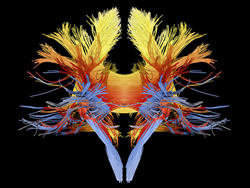Eye-catching Images Offered for Displays Showing Light Science, Light-Based Technologies


BELLINGHAM, Washington, USA (PRWEB) January 25, 2015
Human interactions take place around light, be it daylight, moonlight and campfire, or LEDs. While the role of light in life itself on Earth has been long acknowledged, light-based science and technology have revolutionized modern life through applications in medicine, communications, entertainment, and culture.
This year, during the United Nations’ International Year of Light and Light-based Technologies 2015 (IYL2015), educators in STEM (science, technology, engineering, and mathematics) fields, community group organizers, and individuals can share that story through customized displays, using striking images coupled with general-audience descriptions provided at no charge.
The program, Light Beyond the Bulb, is sponsored by SPIE, the international society for optics and photonics, the Chandra X-Ray Center (CXC) at the Smithsonian Astrophysical Observatory, and the International Astronomical Union.
Light Beyond the Bulb images display the ubiquity and amazing variety of light-based technologies, and are particularly suited for audiences interested in science, how research is transformed into new applications from entertainment to healthcare, and how the world works.
The descriptive captions and images were crowd-sourced then expert-curated for science content, beauty, and the ability to engage all audiences.
“The International Year of Light observance declared by the United Nations for 2015 is a once-in-a-lifetime opportunity for those of us whose careers are devoted to advancing light-based science and technologies to share information about what these advances mean in everyone’s lives,” said SPIE CEO Eugene Arthurs. “With its eye-catching images, the Light Beyond the Bulb program offers an extremely effective means to tell that story.”
Images and descriptions show, for example, technology that protects newborn infants’ health through noninvasive testing for jaundice, explain the workings of the giant telescopes through which we see the distant universe and learn about its history, and even tell how chlorophyll creates energy and nutrients from sunlight, and why bluebells are blue, he noted.
Information about the customized exhibitions is online at http://www.lightexhibit.org/howtoexhibit.html. All images and caption text are available at no charge for educational use. Local organizers are responsible for obtaining funds for printing as well as for securing locations to host the content.
“We hope the Light Beyond the Bulb displays will spark inspiration among students looking for careers, inventors looking for technologies that can help transition their ideas into reality, and people throughout the world looking for ways to solve problems as basic as clean-water systems and as creative as works of art,” Arthurs said.
Current customized exhibitions are in museums, planetariums, universities, libraries, airports, conferences, and festivals in the U.S.A., Canada, United Kingdom, Spain, Serbia, South Africa, Puerto Rico, Mauritius, Venezuela, Argentina, and Brazil. Locations are listed in the exhibit schedule on the Light Beyond the Bulb website. An exhibition was featured this month at the IYL2015 opening ceremony at UNESCO headquarters in Paris, and another will be mounted at SPIE Photonics West in San Francisco, California, 6-12 February.
About SPIE
SPIE is the international society for optics and photonics, a not-for-profit organization founded in 1955 to advance light-based technologies. The Society serves nearly 256,000 constituents from approximately 155 countries, offering conferences, continuing education, books, journals, and a digital library in support of interdisciplinary information exchange, professional networking, and patent precedent. SPIE provided more than $ 3.4 million in support of education and outreach programs in 2014.
Related Mathematics Press Releases